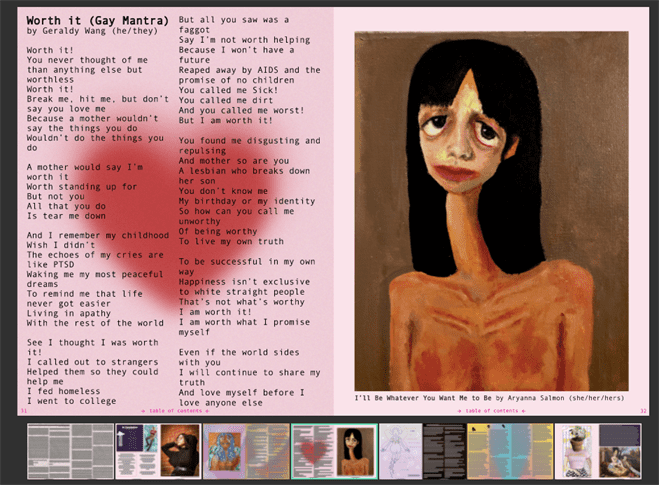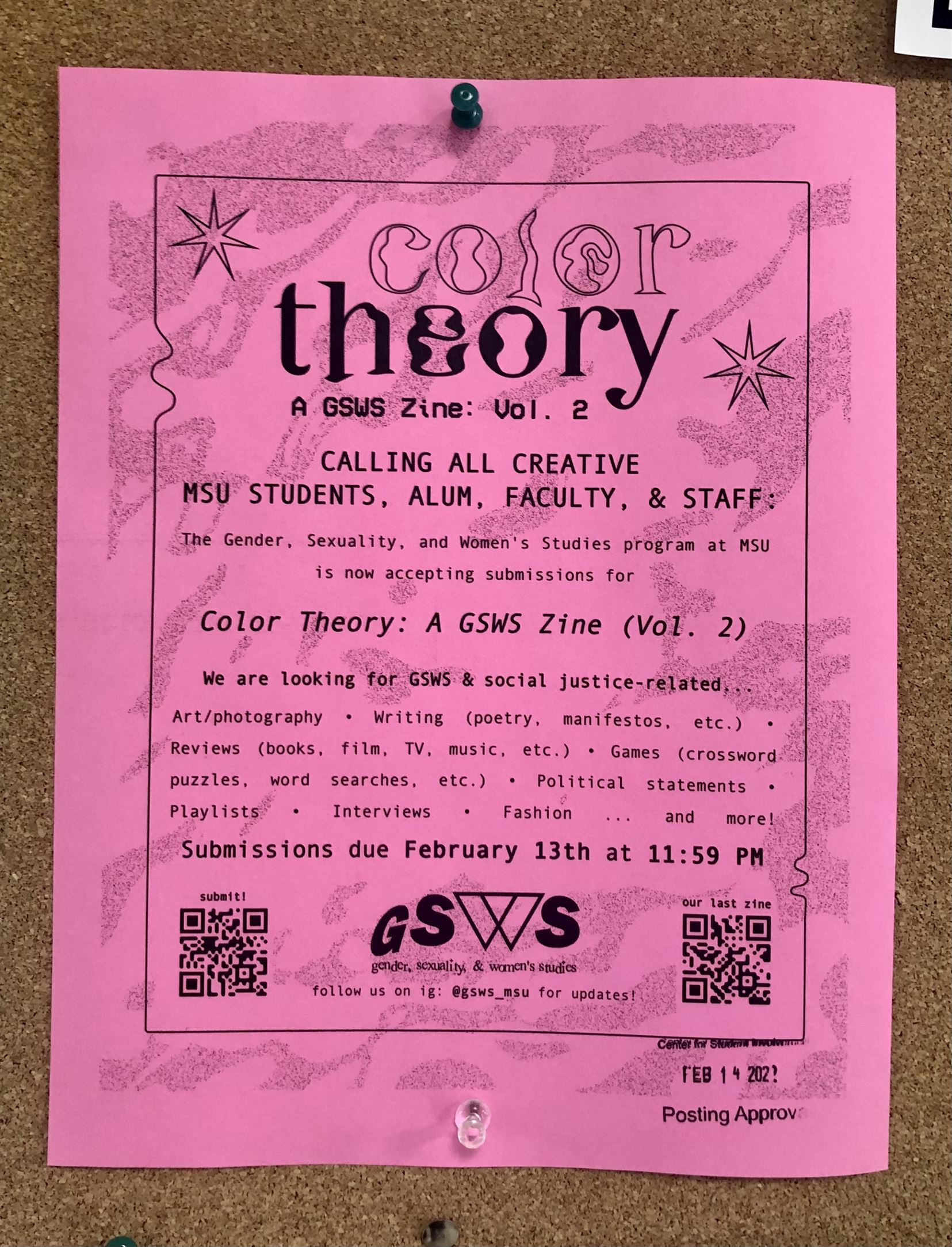Dreamy collages of people with microwaves for heads; poems about living in an alternative universe; short essays demanding the freedom of queer Palestinians. This is just some of the content a reader can find when flipping through Montclair State’s Gender, Sexuality and Women’s Studies (GSWS) “Color Theory (Vol. 1)” zine.
Niko Farley, a senior psychology major, and Jonah Schwartz, a 2021 GSWS graduate, are the creators and co-editors of “Color Theory,” with Farley being the lead organizer. The project debuted in May 2021 and was the first of its kind within the GSWS program.
“‘Color Theory’ is an intersectional feminist zine with one of its core aims to center and amplify marginalized voices in our campus community,” Schwartz said.

Jonah Schwartz, a GSWS graduated student, is a co-creator of “Color Theory.”
Photo courtesy of Gab Maiorano
Zines have no formal definition but can be described broadly as underground, self-published magazines of any topic. According to “A Brief History of Zines,” the medium dates back to the 1930s and socially marginalized groups often use them as a form of activism. Zines are most often physical objects, but they can also be electronically published.
Compared to academic materials, zines are less strict on revisions and more accessible to readers due to their DIY nature. Farley and Schwartz wanted “Color Theory” to be a “subjective creative dump” where students could express themselves freely with little censorship.
“Zines are historically non-mainstream, self-publications that people of all different identities would use to be heard,” Farley said. “We thought there was no better way to show the output of the GSWS program and all the things we’ve been learning than through some form of creative expression.”

Niko Farley, a senior psychology major, is one of the co-creators of “Color Theory.”
Photo courtesy of Gab Maiorano
The submission guidelines for “Color Theory” are relatively loose, as the only requirement is that the material is related to the GSWS program. The zine is open to showcasing all types of art, including drawings, photography, writing, puzzles, playlists and interviews.
The beginnings of “Color Theory” trace back to fall 2020 when Farley and Schwartz interned for the GSWS program and pitched the idea of a collaborative zine to their faculty advisor, Jessica Restaino. During their time at Montclair State, especially during the coronavirus (COVID-19) pandemic, Farley and Schwartz felt that GSWS students had few resources to apply their education outside the classroom and were limited in communal activities.
“I found myself so moved by [Farley and Schwartz’s] creative energy and capacity to have a vision to make something,” Restaino said. “Particularly something that brings people together and celebrates what it means to be human.”
After the online publication of “Color Theory (Vol. 1),” Farley, Schwartz and Restaino noticed the GSWS program had a significant increase in signups and student involvement.
Spencer Crines, a sophomore GSWS major, explained how it gave him and his writing a sense of belonging.
“[‘Color Theory’] helped me feel more connected to the queer community on campus and in the local area,” Crines said. “I knew [my writing] would be read, but I didn’t think it would be something I would be recognized for.”
As the zine circulated campus and elicited positive reactions, Farley and Schwartz decided to keep up the momentum and create a second volume.
When submissions reopened, the two were ecstatic to find that responses were immediate and had nearly doubled since the first volume. While this means the selection process will have to be more involved, Farley and Schwartz are already impressed with the quality of submissions and hope to showcase the wide range of student talent.
The digital version of “Color Theory (Vol. 2)” is expected to release this month, and physical copies are to be printed in April thanks to an increased project budget given by the university. This volume will also include a new credits section for contributing artists to promote their creative practice(s). Additionally, Farley and Schwartz plan to host an on-campus celebration on April 29 with presentations from contributors.
“I hope readers can see themselves [in the work] or a perspective different from their own, and feel a sense of community regardless of their relationship to the diverse communities represented,” Schwartz said.
While Farley’s graduation this May will likely mean the end of “Color Theory,” the GSWS program has other collaborative and student-led projects, such as Conversations in Feminism and the university’s chapter of Planned Parenthood Generation Action.




